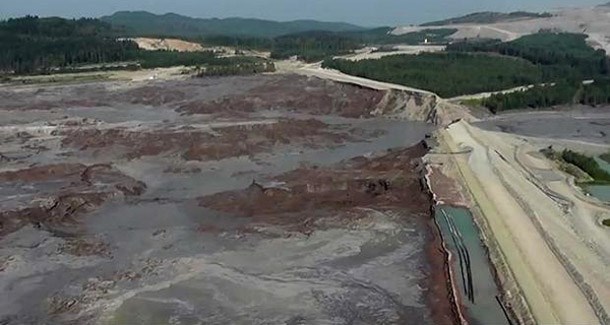Aboriginal nations concerned about the possibility of another Mount Polley Mine disaster have examined the potential dangers at other mines.
A report released today by the B.C. First Nations Energy and Mining Council puts mathematical meat to the argument that B.C.'s mining industry is a threat to ages-old food and ecology chains if that sector doesn't do a better job of locking its water doors. That concern was largely hypothetical until the dam at Mount Polley burst, sending an avalanche of water down the mountainside into Quesnel Lake.
No human casualties occurred in the massive torrent that lasted for days, but the impacts to the environment have been the subject of intense scientific scrutiny ever since and those studies are ongoing.
The event triggered a study of other mine sites across the B.C. interior.
"A detailed survey of central and northern B.C. shows the 35 tailings ponds at 26 mining operations on 48 key watersheds could impact 33 First Nations communities; more than 200 other communities, including most of the largest cities in the region; and 8,678 km of fish-bearing waters," said Nelson Leon, the council's president.
The document is called Uncertainty Upstream: Potential Threats from Tailings Facility Failures in Northern British Columbia. What it is not, Leon said, is an indictment of the mining industry.
"The analysis is not intended to imply all the tailings facilities analyzed will at some point fail, but says the work provides 'a comprehensive summary of potential threats from future tailings facility failures in Northern British Columbia, as well as act as a cautionary exercise for future planning given the increase in interest and capacity for future mining operations throughout the region,'" he said.
Uncertainty Upstream includes detailed maps of the key watersheds. The council is sharing it with the provincial government as a public document, and will be available for First Nations to help them assess the risks to their communities. The focus is salmon, on which many B.C. aboriginal nations depend for food and trade.
The data shows a total of 3,275 km of waterways are immediately downstream of the 35 tailing ponds and 5,403 km lie in watersheds further downstream where potential contaminants could eventually reach.
According to the report, a full 80 per cent of Chinook salmon habitat in the region (12,813 km) is either downstream of a tailings facility or requires migrating through a potential contaminant flow path. For Sockeye, Coho and Chum species, the numbers are 79 per cent, 58 per cent and 47 per cent respectively.
Dave Porter, the council's CEO, said the report would be a useful tool for First Nations looking to balance industrial activities on their territories versus the risks to natural values.
"In addition to threatening drinking water for the 33 First Nations communities and 208 other communities, including Prince George, Smithers, Terrace and other big centres, pollution from any breaches could be devastating to B.C.'s key salmon and steelhead, which the report notes are acutely sensitive to the copper that is common in acid rock drainage," Porter said. "Copper can be acutely toxic to adult salmon and steelhead in concentrations of as low as 50 parts per billion. Much lower concentrations can affect the sense of smell that guides salmon to their spawning grounds and leave juveniles more exposed to predators."
In its recommendations the report calls for:
The protection of entire river, lake, and wetland ecosystems from industrial activities and impacts;
Renewed focus on establishing headwater-to-mouth watershed protected areas for river systems with full complements of migratory fish to compensate for freshwater habitat and biodiversity lost and impaired in other watersheds;
Protected areas that encompass watersheds and waterways to ensure rivers remain intact and hydrological flows are unimpaired;
Mining companies and governments to ensure that impacted communities secure lasting, long-term economic benefits that enhance community health and sustainability;
Communities and the public to be protected by funding mechanisms for unanticipated post mine-closure impacts or financial burdens for cleanup and remediation.



